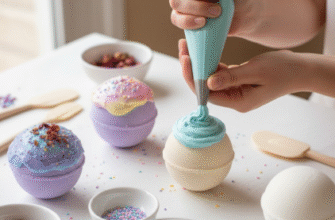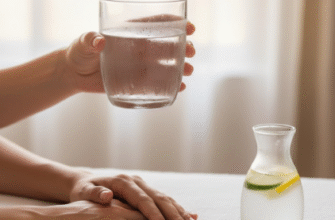Our furry companions rely on their paws for almost everything – walking, running, playing fetch, and even exploring the world through touch. But those tough little pads face a lot of challenges! Think about scorching hot pavement in the summer, icy sidewalks and irritating salt in the winter, rough terrain on hikes, or even just the drying effects of indoor heating. All these can lead to dry, cracked, uncomfortable paws. While you can buy paw balms, making your own is surprisingly easy, often more affordable, and lets you know exactly what wholesome ingredients are going on (and potentially in!) your pet.
Why bother with paw balm? Healthy paw pads are crucial for your pet’s comfort and mobility. Cracks and dryness aren’t just unsightly; they can be genuinely painful and even lead to infections if debris gets lodged in them. A good balm acts like a protective barrier, locking in moisture and shielding pads from harsh elements. It can soothe existing dryness and help prevent future problems. Plus, applying it can be a nice bonding moment between you and your pet.
Understanding Paw Pad Problems
Before we dive into the recipe, let’s quickly appreciate what our pets’ paws endure. Unlike our shoe-protected feet, their pads are constantly exposed.
- Heat: Asphalt and even sand can get incredibly hot, quickly burning sensitive paw pads. Imagine walking barefoot on hot pavement – ouch!
- Cold & Ice: Freezing temperatures can dry out pads, making them prone to cracking. Ice balls can form between toes, causing discomfort, and de-icing chemicals (like salt) are highly irritating and can cause chemical burns or be toxic if licked off.
- Rough Surfaces: Hiking trails, gravel paths, or even just uneven ground can be abrasive, leading to wear and tear or small cuts.
- Allergens & Irritants: Paws pick up everything from pollen to lawn chemicals, which can cause irritation or allergic reactions for some pets.
- Dry Air: Just like our skin gets dry in the winter or in air-conditioned environments, so do paw pads.
Using a protective balm helps create a shield against many of these common paw problems, keeping those pads supple and strong.
Why Make Your Own Paw Balm?
Going the DIY route has several appealing advantages. Firstly, you control the ingredients. You can choose high-quality, natural components and avoid the fillers, artificial fragrances, or potentially harmful chemicals sometimes found in commercial products. This is especially important since dogs and cats often lick their paws, ingesting whatever is applied to them. Secondly, it’s often more cost-effective in the long run. A small batch can last quite a while. Thirdly, it’s surprisingly simple! If you can melt and stir, you can make this balm. Finally, there’s a certain satisfaction in creating something beneficial for your beloved pet with your own hands.
A Simple, Natural Paw Balm Recipe
This recipe uses just a few readily available, natural ingredients known for their moisturizing and protective qualities. You can often find these online, in health food stores, or sometimes even in larger supermarkets.
Ingredients You’ll Need:
- 2 tablespoons Beeswax Pellets: Beeswax is the magic ingredient that provides structure and creates a protective barrier on the paws. It helps seal in moisture and repel water or irritants. Pellets are easier to measure and melt than a solid block.
- 2 tablespoons Coconut Oil: Known for its moisturizing properties and natural soothing abilities. Opt for organic, unrefined coconut oil if possible.
- 2 tablespoons Shea Butter: This is a fantastic emollient, rich in vitamins and fatty acids. It helps deeply moisturize and soften dry, cracked skin (or paw pads!). Raw or unrefined shea butter retains more nutrients.
- 1 tablespoon Olive Oil (or Sweet Almond Oil): Adds extra moisturizing power and helps achieve a smoother consistency. Olive oil is usually easy to find, but sweet almond oil is another great option.
Optional addition: A few drops of Vitamin E oil can act as a natural preservative and offers additional skin-soothing benefits. Ensure it’s plain Vitamin E oil, not mixed with other ingredients.
Equipment:
- Small saucepan or double boiler (a heatproof bowl set over a pan of simmering water works perfectly)
- Stirring utensil (like a spoon or silicone spatula)
- Measuring spoons
- Small tins or jars with lids for storage (lip balm tins, small shallow glass jars work well)
Step-by-Step Instructions:
Making this balm is a straightforward process. Just follow these steps:
- Prepare your double boiler: If you don’t have one, fill a small saucepan with an inch or two of water and bring it to a gentle simmer over low-medium heat. Place a heatproof bowl (glass or metal) securely over the saucepan, ensuring the bottom of the bowl doesn’t touch the water.
- Melt the solids: Add the beeswax pellets, coconut oil, and shea butter to the heatproof bowl. Let them melt gently over the simmering water, stirring occasionally. Beeswax takes the longest to melt, so be patient. Avoid high heat, as it can degrade the quality of the oils.
- Add the liquid oil: Once the beeswax, coconut oil, and shea butter are completely melted and combined, remove the bowl from the heat (be careful, it will be hot!). Stir in the olive oil (or sweet almond oil). If you’re using Vitamin E oil, add it now.
- Stir well: Mix everything thoroughly to ensure all the ingredients are fully incorporated and the mixture is smooth.
- Pour into containers: Carefully pour the warm liquid mixture into your clean, dry tins or jars. Work relatively quickly, as the mixture will start to solidify as it cools.
- Cool and solidify: Leave the containers undisturbed at room temperature for several hours, or until the balm is completely solid. You can speed this up by placing them in the refrigerator for about 30-60 minutes, but cooling at room temperature sometimes results in a smoother texture.
- Label and store: Once solid, put the lids on your containers. It’s helpful to label them with the contents and date made. Store the paw balm in a cool, dry place away from direct sunlight. It should last for several months thanks to the stability of the ingredients.
Important Considerations Before Use: Always perform a small patch test on a less sensitive area of your pet’s skin (like the inner leg) 24 hours before applying the balm liberally to their paws. This helps ensure they don’t have an unexpected reaction to any ingredients. While these ingredients are generally considered safe if licked in small amounts, confirm their suitability for your specific pet, especially if they have known allergies or health conditions. Consulting your veterinarian is always the safest course of action if you have any doubts about ingredients or application.
How to Apply the Homemade Paw Balm
Using the balm is simple. Aim to apply it before heading out for walks in harsh conditions (hot pavement, ice, salt) and/or before bedtime to allow it to soak in overnight.
- Clean the Paws: If your pet’s paws are dirty or wet, gently wipe them clean with a damp cloth and dry them thoroughly. You don’t want to trap dirt or moisture under the balm.
- Scoop a Little Balm: Use clean fingers or a small spoon to scoop out a small amount of the balm. It will soften slightly with the warmth of your fingers.
- Massage Gently: Gently massage the balm into your pet’s paw pads. Pay attention to the areas between the toes as well, especially in winter to help prevent ice balls.
- Distraction (if needed): Many pets will immediately try to lick the balm off. Try applying it just before a meal, a walk, or playtime to distract them for a few minutes while it absorbs. A little licking is usually okay with these natural ingredients, but you want it to have time to work.
- Frequency: Apply as needed. This might be daily during harsh weather seasons or just a couple of times a week for general maintenance. Observe your pet’s paws – if they look dry or feel rough, it’s time for some balm!
Extra Paw Care Tips
Beyond using paw balm, here are a few other things you can do to keep your furry friend’s feet happy:
- Regular Paw Checks: Get in the habit of inspecting your pet’s paws regularly. Look for cracks, cuts, blisters, foreign objects stuck between toes (like burrs or small stones), or signs of irritation.
- Nail Trims: Keep nails trimmed to a comfortable length. Overly long nails can affect gait and potentially cause discomfort or get snagged.
- Paw Wiping: After walks, especially in winter or if you live in an area where lawn chemicals are used, wipe your pet’s paws with a damp cloth to remove salt, de-icers, mud, or potential allergens.
- Avoid Hazards When Possible: Try to walk on grass instead of hot asphalt in summer. Steer clear of heavily salted sidewalks in winter if you can.
- Consider Booties: For extreme conditions or very sensitive paws, pet booties can offer excellent protection, although not all pets tolerate them well!
Making your own paw balm is a simple, rewarding way to contribute to your pet’s comfort and well-being. It’s a little pot of protection, made with care, using nature’s own moisturizers. Give this recipe a try – your furry friend’s happy, healthy paws will thank you!








